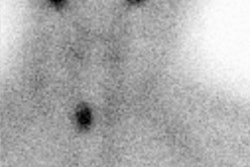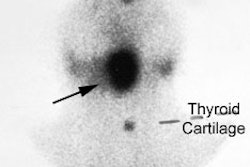Semin Nucl Med 1995 Jul;25(3):205-20
Advances in the management of patients with thyroid disease.
Dworkin HJ, Meier DA, Kaplan M.
Discoveries related to thyroid immunology, especially concerning the
thyroid-stimulating hormone (TSH) receptor, may facilitate new immunologic
approaches to the therapy of Graves' disease and the thyroiditis syndromes.
Advances in genetics are being applied to the thyroid hormone resistance
syndromes and papillary and medullary carcinomas. The development of ever more
sensitive TSH assays has led to the detection of subclinical thyroid disease,
which has special implications for the sick and elderly patients. Sensitive TSH
assays also allow more precise titration of levothyroxine (T4) dosages,
especially for patients with a past history of thyroid cancer. Evidence
continues to accumulate suggesting that postmenopausal women on T4 doses that
suppress the TSH level below 0.1 ulU/mL have lower bone mineral density than
matched patients with healthy TSH levels. Also, pregnant hypothyroid women need
higher T4 doses to normalize the TSH levels. In the evaluation of thyroid
nodules, fine-needle aspiration biopsy is the single most definitive modality in
selecting the patients for surgery. Scintigraphy provides a complimentary role,
especially in defining autonomously functioning thyroid adenomas (AFTA), because
these should not be treated with T4 suppression. Ultrasound-guided needle biopsy
is occasionally helpful with nodules that are difficult to palpate. Concern for
possible tracheal compression after treatment of toxic multinodular goiter with
large doses of radioactive iodine (I-131) in the range of 50 to 150 mCi (1.85 to
5.5 GBq) does not seem warranted. Work, primarily out of Italy, suggests AFTA
can be ablated with repeat ethanol injections. Residual tissues after
thyroidectomy for differentiated carcinoma can be "stunned" by tracer
doses of 131I greater than 3.0 mCi (111 MBq), which diminishes the uptake and
effectiveness of a subsequent therapy dose. Positron emission tomograph, imaging
with thallium-201, and Technetium 99m Sestamibi can identify a small number of
patients shown to have metastases from differentiated thyroid carcinoma by
increasing thyroglobulin levels in the absence of 131I uptake. Several groups
have recently advocated treating such patients empirically with 131I.
Publication Types:
- Review




